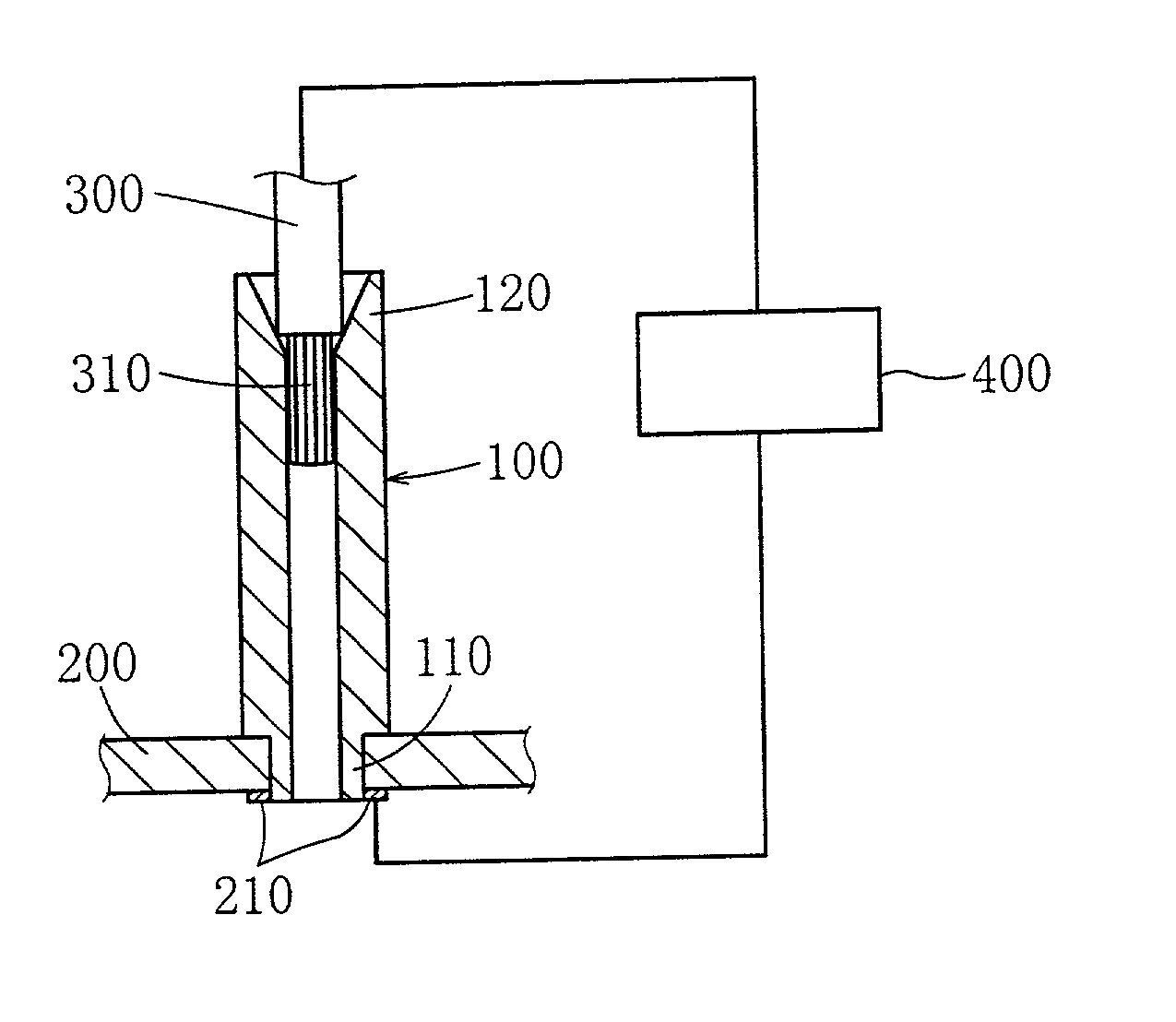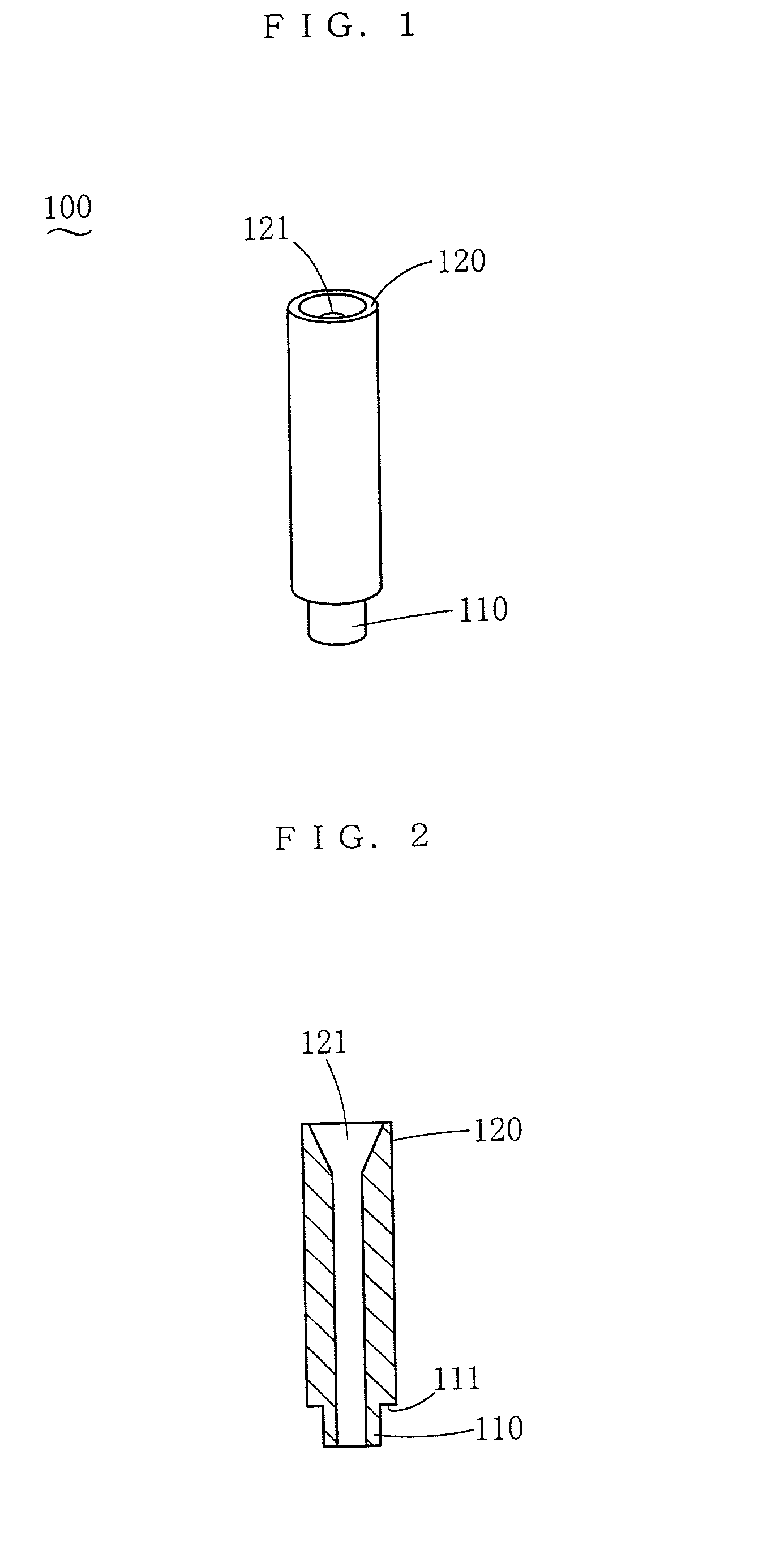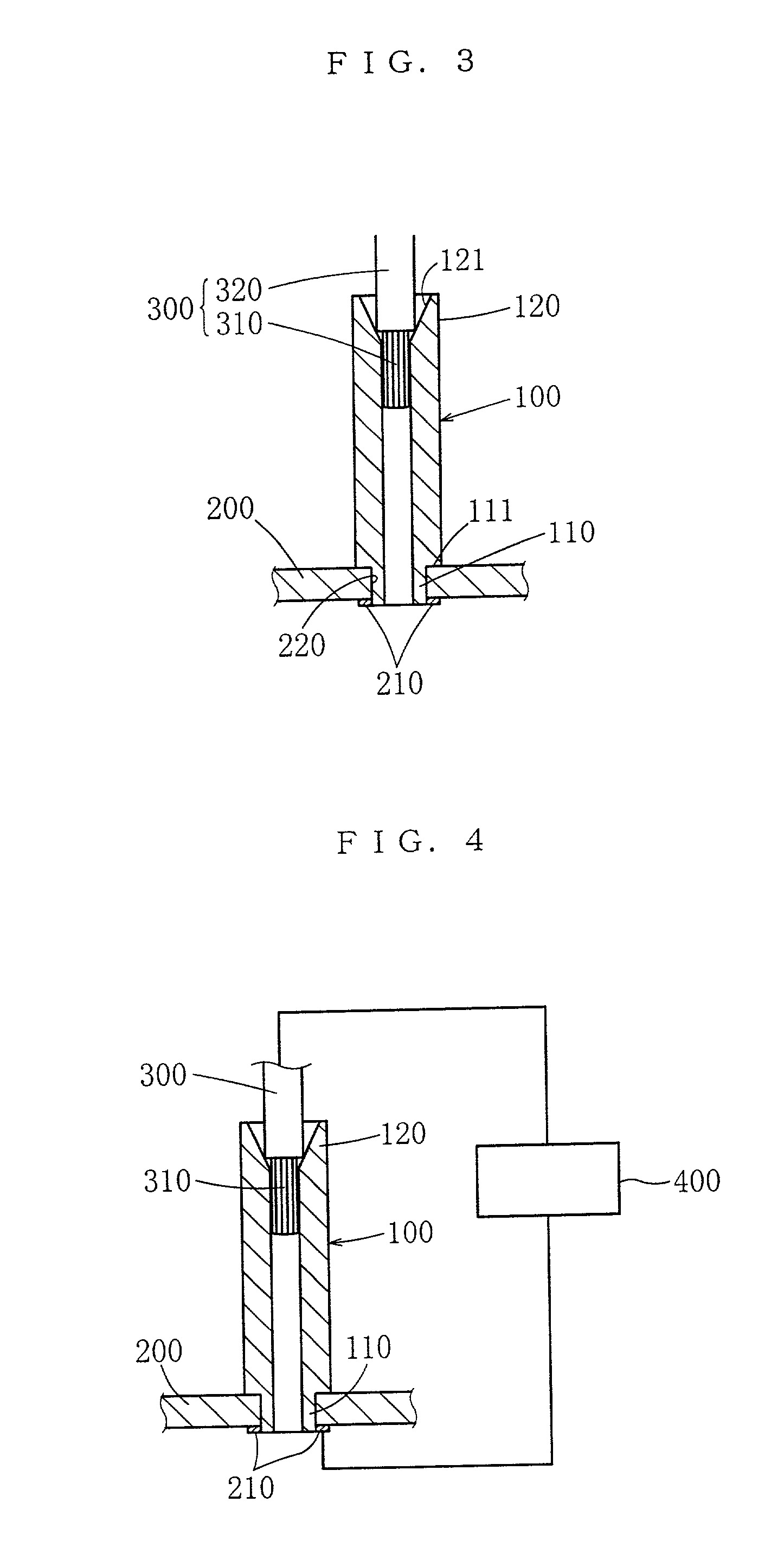Electric contact and an electric connector both using resin solder and a method of connecting them to a printed circuit board
- Summary
- Abstract
- Description
- Claims
- Application Information
AI Technical Summary
Benefits of technology
Problems solved by technology
Method used
Image
Examples
embodiment 1
[0043] 45% by volume of ABS resin (produced by Toray; Toyolac 441), 40% by volume of lead-free solder (produced by Fukuda Kinzoku Hakufun Kogyo; Sn--Cu--Ni--AtW--150) and 15% by volume of copper powder (produced by Fukuda Kinzoku Hakufun Kogyo; FCC-SP-77, mean particle diameter 10 .mu.m) were lightly mixed together and fed into a kneader (Moriyama Seisakusho make, double-screw pressurized type) which was set at 220.degree. C. The mixture was kneaded, without preheating time, at a rate ranging from 25 to 50 r.p.m. for 20 minutes; the resin was heat-plasticated and the solder, under half-melted condition, was dispersed throughout the resin.
[0044] The kneaded material was pelletized by a plunger extrusion pelletizer (Toshin make, Model TP60-2) at the dies temperature ranging from 200 to 240.degree. C. to produce pellets. These pellets were used to make injection molding into molds by an injection molding machine (Kawaguchi Tekko make, KS-10B). The preset temperature was from 230 to 280...
embodiment 2
[0046] 45% by volume of PBT resin (produced by Polyplastic), 40% by volume of lead-free solder (produced by Fukuda Kinzoku Hakufun Kogyo; Sn--Cu--Ni--AtW--150) and 15% by volume of copper powder (produced by Fukuda Kinzoku Hakufun Kogyo; FCC-SP-77, mean particle diameter 10 .mu.m) were lightly mixed together and fed into the kneader (Moriyama Seisakusho make, double-screw pressurized type) which was set at 220.degree. C. The mixture was kneaded, without preheating time, at a rate ranging from 25 to 50 r.p.m. for 20 minutes while efforts were made to prevent the temperature of the kneaded material from rising to 235.degree. C. or over, by lowering the rate of revolution, cooling, etc.; the resin was heat-plasticated and the solder, under half-melted condition, was dispersed throughout the resin. Observation, under an optical microscope, of the state of dispersion of the solder of the kneaded material showed that the solder was evenly dispersed throughout the resin and solder fraction...
embodiment 3
[0047] 35% by volume of ABS resin (produced by Toray; Toyolac 441), 55% by volume of lead-free solder (produced by Fukuda Kinzoku Hakufun Kogyo; Sn--Cu--Ni--AtW--150) and 10% by volume of copper powder (produced by Fukuda Kinzoku Hakufun Kogyo; FCC-SP-77, mean particle diameter 10 .mu.m) were lightly mixed together, and the total of the metal components was set at 65% by volume. Then the mixture was fed into the kneader (Moriyama Seisakusho make, double-screw pressurized type) which was set at 220.degree. C. The mixture was kneaded, without preheating time, at a rate ranging from 25 to 50 r.p.m. for 20 minutes; the resin was heat-plasticated and the solder, under half-melted condition, was dispersed throughout the resin.
[0048] The kneaded material was pelletized by the plunger extrusion pelletizer (Toshin make, Model TP60-2) at the dies temperature ranging from 200 to 240.degree. C. to produce pellets. These pellets were used to make injection molding into molds by the injection mol...
PUM
| Property | Measurement | Unit |
|---|---|---|
| Electrical conductor | aaaaa | aaaaa |
Abstract
Description
Claims
Application Information
 Login to view more
Login to view more - R&D Engineer
- R&D Manager
- IP Professional
- Industry Leading Data Capabilities
- Powerful AI technology
- Patent DNA Extraction
Browse by: Latest US Patents, China's latest patents, Technical Efficacy Thesaurus, Application Domain, Technology Topic.
© 2024 PatSnap. All rights reserved.Legal|Privacy policy|Modern Slavery Act Transparency Statement|Sitemap



